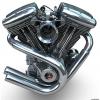I think various dosages from various people is best. Someone taking 7 grams a day may find that it works and someone on 125mg a day may not have any effect no matter how many years they take it. The reverse could also be true. It is quite possible that only over a certain level that the effects are felt, the mice got a lot. I'd rather piss some away than miss the effect that could keep me alive. We are all dying, there is no time for patience
)
We have also got to be careful with taking really large doses as we may not be able to metabolize a great deal of NR all at once, and may possibly lose a lot of it passing through the body...This is all new stuff here and I think smaller doses (max 2 grams) per day over a prolonged period would be the best way to go until we know something different through trial results. Better smaller doses getting metabolised than large doses getting half of it pissed away. Like I said in that post....Patience is a virtue. Just my opinion.
You are correct, we are all dying, but we also don't want to hasten the process. ![]()
As of yet NR is an unknown quantity and has not been tested in humans in large doses. So there is an element of risk involved, especially in large doses.
An example of that is Niacinamide, to large a dose has been known to affect the liver in some people in a negative way at over 3 grams per day. NR being from the same Vitamin B family may have similar issues in high dosage.
I suppose what I am saying is we are responsible for our own clinical trials with NR, and I would hate that someone on this forum took too much of a leap of faith here and hurt themselves.
I think it was yesterday someone on the Niagen results thread was saying that he had painful lymph glands after using it subliminally and you yourself had an issue with a very sore jaw two days in a row doing the same thing...Lymph glands are protective and get rid of poisons so that makes me think it might not be such a good thing to rush into large doses straight away.
I certainly think that two or three grams would be safe but I personally wouldn't be going any higher than that without hearing more from the researchers.
Those mice that were used in the NMN experiments were sacrificed shortly after, so we don't know what the long term use and effects would have been...
And this was not NR it was NMN.
I was reading a day or two ago they have announced they have found a cure for Hep C, the dosage is spread over three months, the article I was reading also said this was liver toxic if taken in large doses to quickly...So in essence, a cure for a liver disease if taken to quickly, can do the exact opposite and possibly damage the liver even more..
Like I say, patience is a virtue ![]()






















































